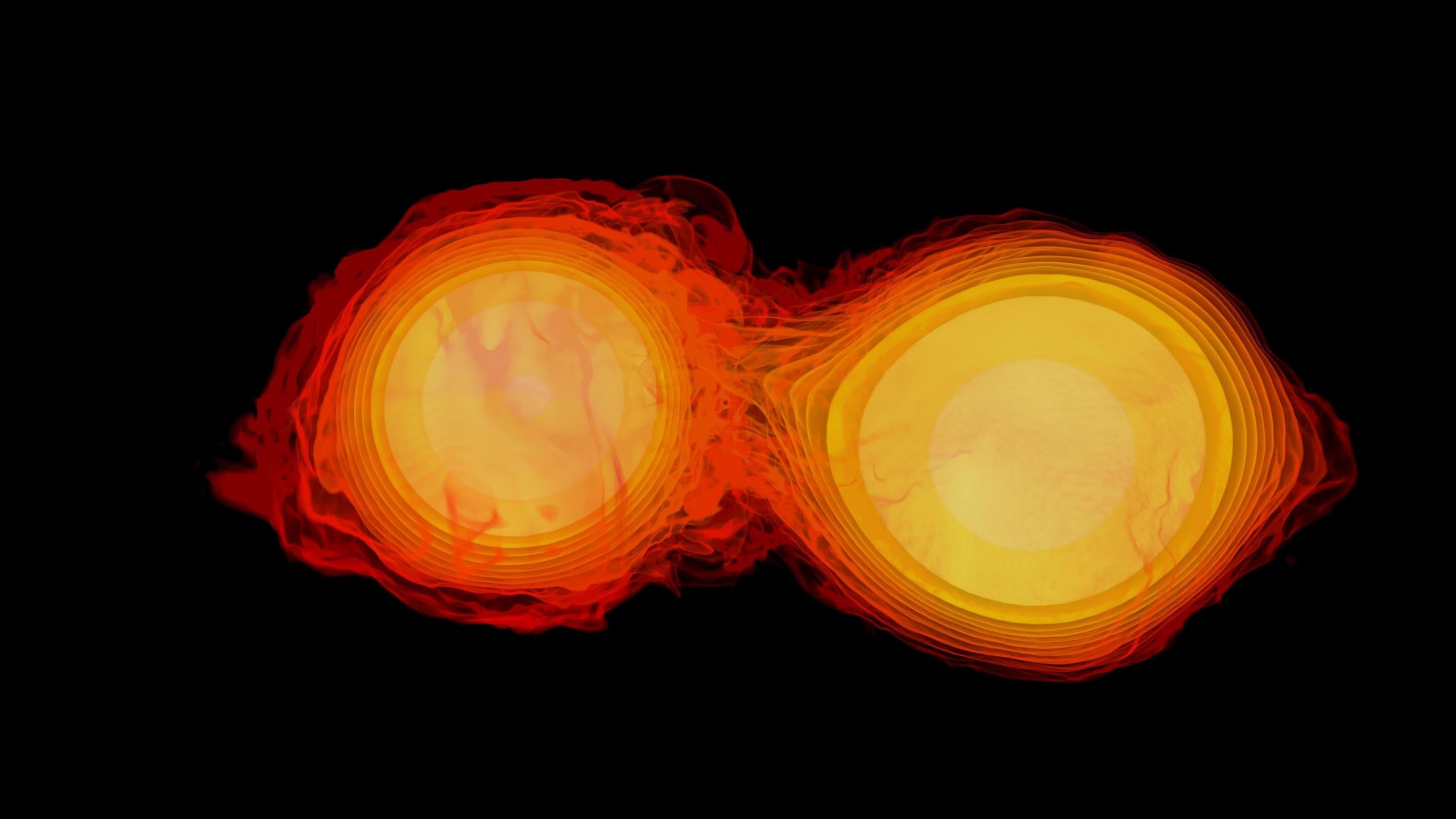A large collaboration of astrophysicists report they have made the first-ever confirmed detections of shockwaves produced by mergers between neutron stars and black holes. The detections, 10 days apart, represent two of these enormous cosmic unions.
In January 2020, Earth quivered ever so slightly as shockwaves imperceptible to human senses passed through it. Those ripples were gravitational waves, perturbations in spacetime generated by all massive objects but only detectable from extremely huge events, like two black holes colliding. The waves were strong enough to be picked up by the Laser Interferometer Gravitational-Wave Observatory in Louisiana (the Washington branch of the instrument was offline at the time) and the similar Virgo experiment in Pisa, Italy. These experiments detect gravitational waves using a sensitive arrangement of mirrors and laser beams.
Black holes are points in space with such intense gravitational fields that not even light can escape. They form when a star dies and collapses in on itself. Neutron stars form similarly; they are the extremely dense collapsed remains of dead stars and are mostly composed of packed-in neutrons.
Susan Scott, an astrophysicist at the Australian National University and co-author of the new study, said in an email that the more detections the team makes, the more researchers will learn about how these stars ended up in death spirals with black holes.

The researchers determine the players in these comic collisions based on their masses, which calculate based on the characteristics of the gravitational waves; if one of the objects is about twice the mass of our Sun or lighter, they figure it to be a neutron star. If a mass is five times our Sun or larger, they say it’s a black hole. Two observations previously reported by Gizmodo raised the possibility that a black hole-neutron star merger had occurred, but the identities of the objects weren’t confirmed, because one of the involved objects sat in the “mass gap” between the smallest known black holes and the largest known neutron stars. The new findings are published today in the Astrophysical Journal Letters.
“While the gravitational waves alone don’t reveal the structure of the lighter object, we can infer its maximum mass,” said Bhooshan Gadre, an astrophysicist at the Max Planck Institute for Gravitational Physics, in a LIGO press release. “By combining this information with theoretical predictions of expected neutron star masses in such a binary system, we conclude that a neutron star is the most likely explanation.”
The two events were detected 10 days apart, on January 5 and January 15, 2020. The researchers aren’t sure where in the universe the waves came from but know that they were 900 million and 1 billion light-years away, respectively, based on how strong the waves were compared to how strong the researchers would expect them to be at their origin. Scott said that while the phenomena are called “mergers” between black holes and neutron stars, it was probably more like the black holes engulfing the neutron stars than the two colliding in space.
Based on the two recent detections, the research team estimates that one of these black hole-neutron star mergers happens about once a month within a billion light-years of Earth. The next observing run for the detectors, set to begin next summer, will aim to find more of these mergers. “We are also going after new types of sources, such as gravitational waves from a supernova exploding, and also a continuous stream of fainter gravitational waves coming from a spinning neutron star,” Scott said, which “will further help us to understand the nature of neutron star material.”
The first confirmed black hole-neutron star mergers have come, and they’re certainly not the last. The next observing run will hopefully reveal more of these remarkable pairings.
